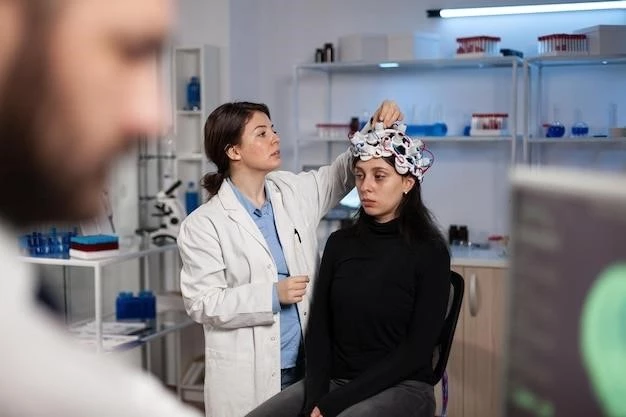Introduction to Vitreoretinal Degeneration
Vitreoretinal degeneration involves progressive changes in the vitreous and retina, impacting visual health. Learn about its implications and management.
Definition and Overview
Vitreoretinal degeneration involves progressive changes in the vitreous and retina, impacting visual health. It may present with associated risk factors and clinical manifestations, necessitating comprehensive management strategies.
Types of Vitreoretinal Degeneration
- Snowflake Vitreoretinal Degeneration
- Lattice Degeneration
Snowflake Vitreoretinal Degeneration
Snowflake Vitreoretinal Degeneration (SVD) is a progressive hereditary eye disorder caused by mutations in specific genes, leading to unique diagnostic features and manifestations.
Lattice Degeneration
Lattice degeneration is a vitreoretinal degenerative condition characterized by retinal thinning, vitreous liquefaction, and strong vitreoretinal adhesions, increasing the risk of retinal tears and detachment. Risk factors include myopia and hereditary vitreopathies like Stickler syndrome.
Symptoms and Clinical Manifestations
Recognizing vitreoretinal degeneration may involve symptoms like retinal thinning, vitreous changes, and increased risk of detachment. Early diagnosis and treatment are crucial.
Ocular Abnormalities
Vitreoretinal degeneration can present with abnormalities such as retinal thinning, vitreous changes, and increased risk of retinal detachment, impacting vision and necessitating prompt management.
Causes and Risk Factors
Understanding the causes and risk factors of vitreoretinal degeneration is crucial, including genetic predisposition and environmental influences that contribute to disease onset and progression.
Genetic Factors
Genetic predisposition plays a crucial role in vitreoretinal degeneration, with mutations in specific genes like KCNJ13 implicated in conditions such as Snowflake Vitreoretinal Degeneration. Understanding these genetic factors is essential for diagnosis and potential targeted therapies.
Diagnosis and Testing
Identification of vitreoretinal degeneration involves thorough examination methods such as retina eye exams to assess structural changes and potential complications for accurate diagnosis.
Retina Eye Exam
Retina eye exams play a vital role in diagnosing vitreoretinal degeneration, allowing for the evaluation of structural changes, early detection of complications, and implementation of appropriate treatment plans to preserve visual health.

Treatment Options
Treatment for vitreoretinal degeneration may involve surgical interventions aimed at managing associated complications and preserving visual function. Early detection and timely treatment are vital.
Surgical Interventions
Surgical interventions play a critical role in managing vitreoretinal degeneration, aiming to address complications such as retinal detachment effectively. Techniques like vitrectomy and retinal reattachment surgery are commonly employed to restore retinal health and preserve vision in affected individuals.
Complications and Prognosis
Understanding the complications of vitreoretinal degeneration, such as retinal detachment, is crucial for determining the prognosis and guiding the management of the condition.
Retinal Detachment
Retinal detachment is a significant complication of vitreoretinal degeneration, necessitating prompt intervention to prevent permanent vision loss. Understanding the risk factors and symptoms is crucial for timely management and improved prognosis.

Research and Advances
Chronic inflammation plays a significant role in vitreoretinal diseases, offering insights into potential therapeutic targets and advancements in managing retinal pathologies.
Role of Chronic Inflammation
Chronic inflammation is pivotal in vitreoretinal diseases, shedding light on potential therapeutic targets for managing retinal pathologies like diabetic retinopathy and age-related macular degeneration.
Impact on Vision and Quality of Life
Vitreoretinal degeneration can lead to central vision impairment, affecting daily activities and impacting the overall quality of life. Understanding these effects is crucial for appropriate management.
Central Vision Impairment
Vitreoretinal degeneration can lead to central vision impairment, affecting daily activities, reading, and recognizing faces, impacting an individual’s quality of life significantly. The progressive nature of the disease can result in challenges in performing tasks that require detailed vision, highlighting the importance of comprehensive management strategies in preserving visual function.
Prevention Strategies
Understanding vitreoretinal degeneration helps in adopting lifestyle modifications to minimize risks and preserve visual health. Regular eye check-ups and healthy habits are essential for prevention.
Lifestyle Modifications
Opting for a healthy lifestyle, including a balanced diet rich in antioxidants, regular exercise, and avoiding tobacco use, can help maintain optimal eye health and potentially reduce the risk of vitreoretinal degeneration development. Additionally, protecting the eyes from harmful UV rays and maintaining regular eye check-ups are essential preventive measures.
Disease⁚ Vitreoretinal degeneration
Management of Age-Related Macular Degeneration
No information available for this section based on the provided content from the internet.
Future Directions in Treatment
Exploring therapeutic innovations is crucial in enhancing the management of vitreoretinal degeneration, potentially revolutionizing treatment approaches and outcomes for affected individuals.
Therapeutic Innovations
Therapeutic innovations in vitreoretinal degeneration management are essential for developing targeted treatments addressing specific genetic mutations and pathological mechanisms, aiming to improve patient outcomes and preserve vision effectively.
Conclusion
The management and treatment of vitreoretinal degeneration are evolving, with a focus on innovative therapeutic approaches, genetic understanding, and lifestyle modifications to enhance patient outcomes and preserve visual health effectively. Continued research and advancements in the field hold promise for improving the prognosis of individuals affected by this condition.
